Marstrand, Pt. 2. A life in Los Angeles.
Part Two of My Family Story. The Swedish immigrants become Americans in Los Angeles. They receive bad news from back home in Marstrand, Sweden.
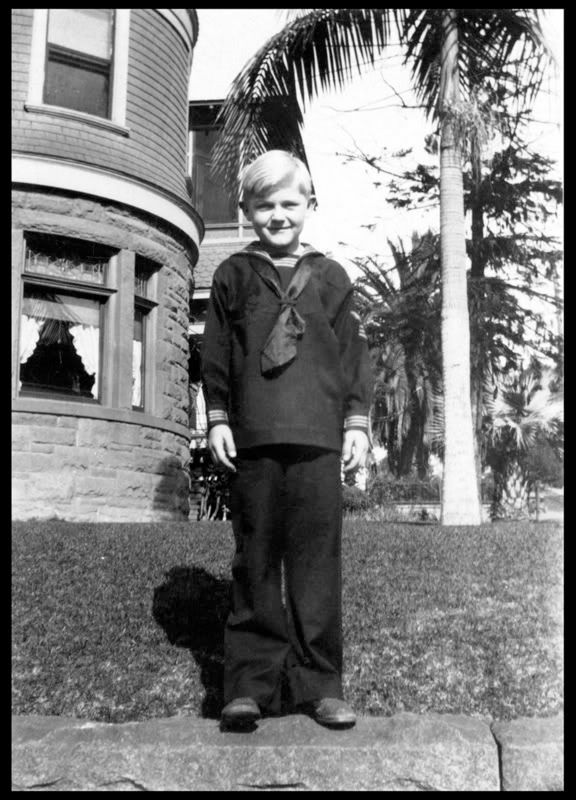
Bill Soderberg, late 1920’s, at Mrs. Burbidge’s Boarding House, Los Angeles
A date wasn’t given to this story. But it was at Mrs. Burbidge’s Boarding House on Ingraham Street and Union Avenue, Los Angeles. Late 1920’s Early 30’s.
Thanksgiving Day. The mouth watering aromas emanating from the kitchen were typical when Gunhild set to work with pots and pans. One may well suppose she already had a stint as an assistant boarding house cook in her mom’s kitchen back home in Marstrand, Sweden. One thing was for sure, when she worked her magic with a stove the results were delicious. Those who saw Gunhild cook say the process was seemingly chaotic. She moved in several directions simultaneously. In a Dervish Whirl she ruled with disorganized order.
That Thanksgiving there must have been numerous tasks she attended to as the turkey sat cooling on the open oven door. She failed to notice one hungry member of the house trot his way into the kitchen. Pointed his snout at the turkey and latched onto it with his jaws. This was a dog, a collie, named Buck. The canine heaved himself with the bird out the back door and beyond.
Upon her discovery of the theft, “Vat da HELL!”
Gunhild tore after that dog with vengeance. The cursing, yelping, rustling and commotion that was heard beyond the kitchen door was followed by her appearance at the threshold, fowl in tote. She wiped, cleaned, patched and massaged that bruised bird back into presentable condition. Upon placing it on a platter, best side showing, she told Bill not to say a word about this to anyone. All was successful. She had a talent for “making do,” and in this case snatched success from the canine jaws of disaster. “Vhere dere is a vill dere is a vay!” One of her sayings in a thick Swedish accent.

Bill began a working life at a young age. His friend from boyhood is Bob Beattie, age 87, recently told me “Bill sold newspapers on the corner of 7th and Union. His mother then worked at the Commodore Hotel, also on 7th and tried to keep an eye out for Bill.”
He learned the hard way to properly count money and make change. People took advantage of the young immigrant by taking from him more change than they paid. Then he had to fight other kids to keep his corner. Bullies that either stole his papers or his money. Or both.
One had to toughen up quickly to turn a profit with newspapers selling for a penny a piece. On a good day a cleared profit was 5 cents. During the leanest times of The Depression bean sandwiches were a common lunch. There’s probably very few Baby Boomers that haven’t heard the stories of this era. “Waste not, want not,” “Finish your plate, ” “You think you have it so tough…” etc.
“Bill and I met at the Cambria Street School. It was an old fashioned wooden school house. That was either in second or third grade, I don’t remember which. But I do remember Mrs. Finch held Bill back one grade because he still didn’t speak English very well. The kids really teased him about that especially when they heard him talk with his mother,” recalled Beattie.
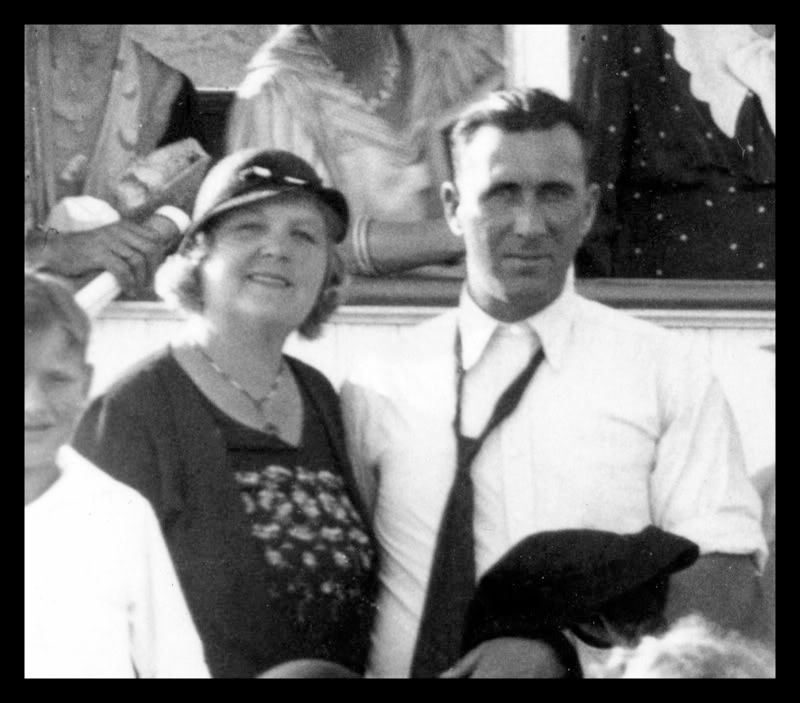
Gunhild and Keith Teter on the Mount Lowe funicular car.
A happy change in their life came when a boarder named Keith Teter checked in at Mrs. Burbidge’s. Keith was an officer with L.A.P.D.
He began his career pounding a beat. When assigned to a squad car an ironic fact came to bear. He never had a driver’s license. His first time out, it was his trustee–the prisoner–that drove. It was the prisoner who taught him to drive.
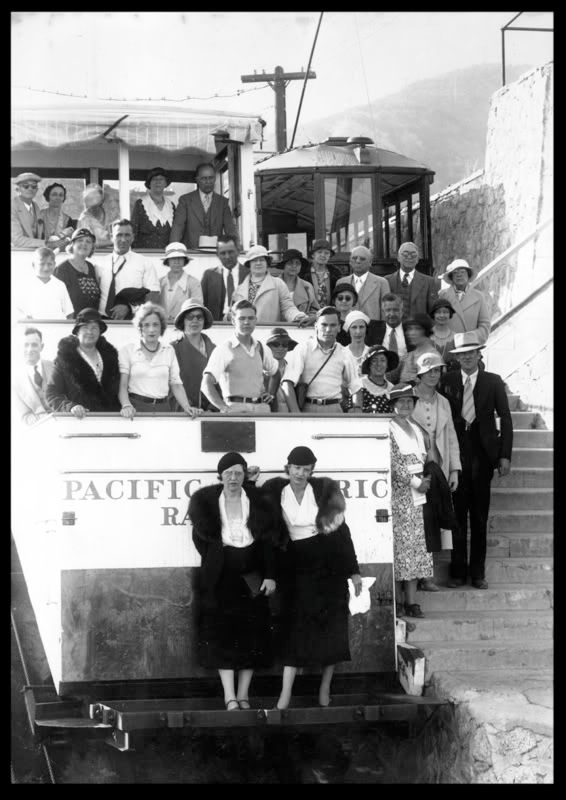
Henry Huntington’s Pacific Electric Railway operated two well known funicular rail cars. One was Angel’s Flight in downtown Los Angeles. The other is the Mount Lowe Car starting in Altadena is pictured here. (Gunhild and Keith, left side. Next row from the top)
Keith was honest, without fail. After shopping if he discovered too much change was given–even if the amount was only a few cents–he turned around and brought the money back, no matter the inconvenience.
He was the cop that criminals trusted to leave their belongings with after being booked. Their goods would be intact after release.
He never accepted gratuities or freebies. In his day he saw his fair share of calls for help from members of the Hollywood elite. One in particular was Judy Garland. She wanted to thank Keith once by giving him a horse. He declined.
Keith detested violence and bullying. He sought to impart gentleness and kindness in the world. He was careful not to hurt even the smallest of insects.
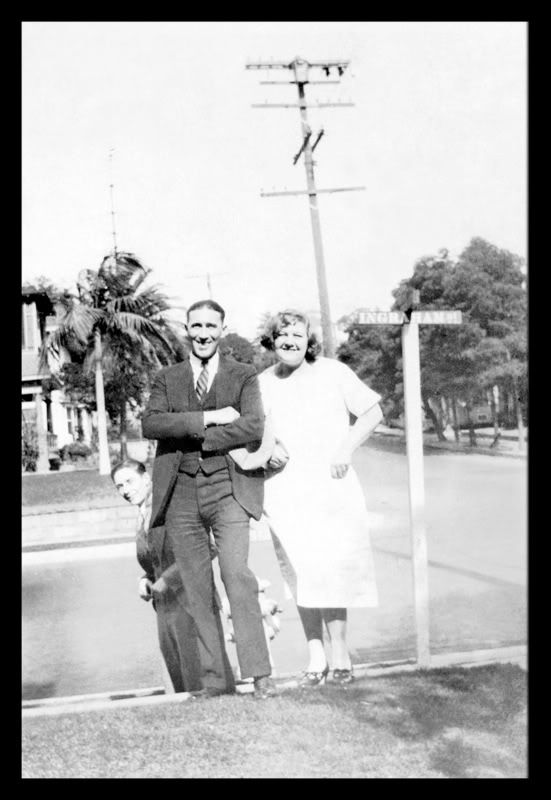
 Keith and Gunhild at Ingraham Street and Union Avenue. Note the tiny street sign.
Keith said about Gunhild, “I looked into those blue eyes and knew I had to marry this woman.” He lavished her with flower boxes and arrangements. He always included a card with a sweet sentiment written by hand.
They married on Saint Valentines day, 1933. He was 40 years old and had not married before. The couple moved into their own home on nearby Shatto Street.

Gunhild with beach ball; Keith and Bill. They’re enjoying recreation at Anaheim Landing. Today it is called Seal Beach.
A sister for Bill, Greta Louise Teter, entered the world in 1934.
“I was a little premature and nearly delivered in the elevator of the hospital,” Says Greta, “The doctor was Dr. Ross of Ross–Loos Medical, a once well known facility.”

Gunhild’s note in Swedish. Keith holding baby Greta. Bill seated right.
Gunhild loved camping and back country excursions. She brought along her kitchen wizardry as part of the experience. On an old camp stove she could make puddings, cakes and biscuits to go along with shish-ka-bobs cooked over the campfire. S’mores over the campfire.

Bill, Keith and Greta.
She cooked roasts, chops, meatballs, etc. When she wanted ham she’d wrap one in butcher paper, put it into the coals from the previous night’s campfire. Potatoes were also thrown in. When the crew came in from a long day of hiking or swimming the feast awaited.
Bob Beattie remembered how most people were trying to work through The Depression. Events in Europe weren’t too much on people’s minds. “It was so far away. The politicians, of course, were following what was going on.”
From the very year The Soderbergs immigrated from Sweden, 1923, Adolf Hitler decided he was destined to run Germany. Through ten years of turbulent political struggle and power building , Hitler became chancellor in 1933. After German President von Hindenburg died, 1934, Hitler declared himself Fuhrer of the Third Reich.
Perhaps the first close look Americans had of Hitler was with the 1936 Summer Olympic Games in Berlin. The year of Jesse Owens and his inspirational performance.
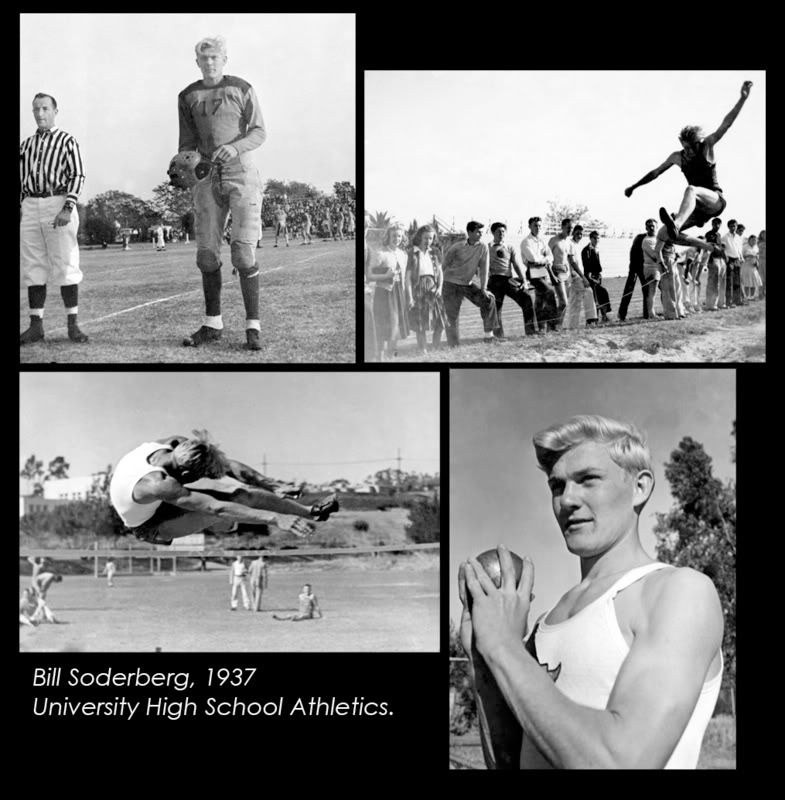
Gunhild loved the football games. She was an enthusiastic spectator.
“Bill and I lost track of each other for awhile. We met up again in 1937 when we found ourselves at the same high school. University High School in West L.A. He was in tenth grade; I was in eleventh; a year apart thanks to old Mrs. Finch back at Cambria School. Bill was a letterman in football, track–the high jump and shot-put. He set school records in many of his events. By then his family was living in a house in Cheviot Hills.”
I asked Bob Beattie if he also remembered, as Bill once described, Olympic Boulevard being waist high in weeds growing through cracks in the pavement.
“Oh my, yes! The west side was nothing but open fields and weeds back in those days. They took one of those fields on Pico and made a drive in movie theater. There was a hole dug out under the fence. Bill and I used lay there to watch movies. You’d run over and turn on a microphone (speaker) to hear the movie. That is until the guard came over with his flashlight.
“That is about the time your dad first met your mother, there around ’37, at the beach in Santa Monica where we all used to go and hang out.”

Bill and Greta (right), 1937. Icon of L.A. Collesium frames the photo.
Though thoroughly absorbed with raising a young daughter, seeing her son through high school, running the household of their new home in Cheviot Hills, Gunhild did not forget she had another family living half a world away in Sweden. The news she heard was not good. For some time her mother Alma was in declining health. News only got worse. Gunhild felt she had to do something. The options and choices couldn’t have been easy. But she traveled across the Atlantic once before with a young child under far more difficult circumstances and conditions. She could certainly do this again.
Greta remembers how her mother explained the situation:
“First, Sweden is my old home where I was born and my mother, your grandmother, is old and not well. I have not seen her for a long time and I feel that I should be with her now. Sweden is far away over the ocean and we will travel on a big ship and we will be gone for a couple of months or so. Daddy needs to stay here because of his work and your brother, Bill, needs to stay in school and study hard.”
Next, Part 3, Gunhild’s return to Sweden; Greta meets her Swedish relatives in Marstrand. War in Europe.